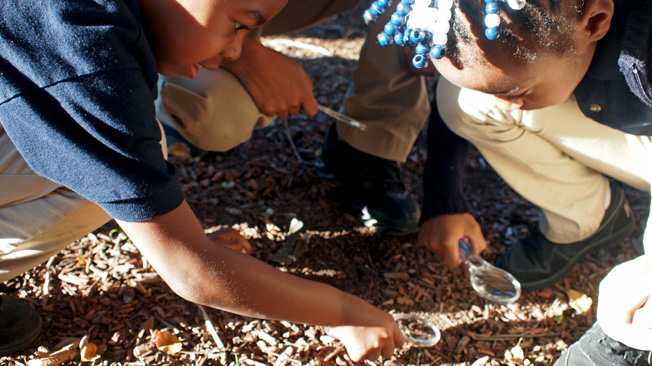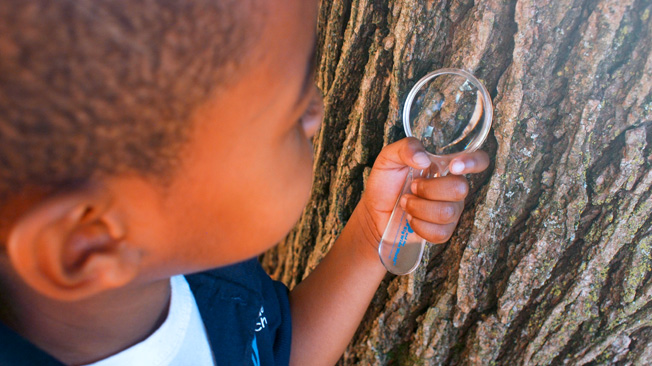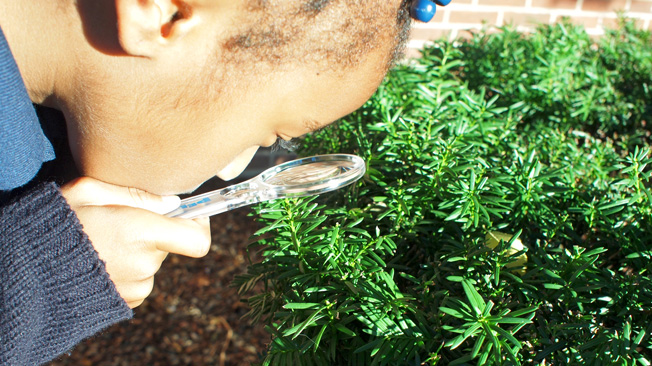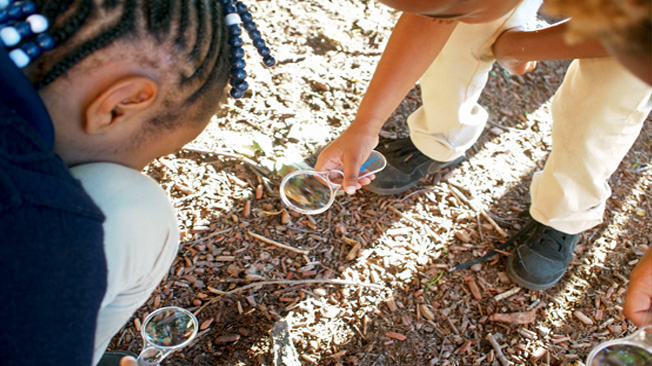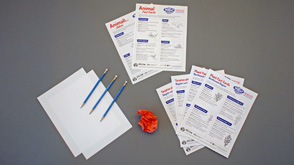Signs of Life
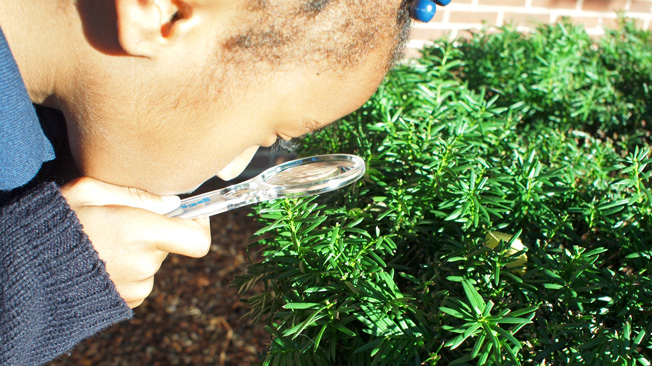
What Is This Activity?
Where do animals and plants live in your neighborhood? Kids predict where living things could find what they need to survive. Then, they look for plants and animals and search for signs of how to survive.
Introduction
Learning Goals
Big Science Ideas:
- Plants need water, sunlight, nutrients, and shelter to live and grow. Animals need food, water, shelter, and space to live and grow.
Skills kids will use to investigate the ideas:
- Identify diverse plants and animals that live in a city or town
- Predict, observe, and compare where local animals can survive
- Identify and communicate the survival needs that city and town habitats meet
How Do You Get Ready?
- Read the activity and gather the materials.
- Review all of the "Animal Facts" and "Plant Facts" cards and select ones that match the wildlife in your area. Print and cut out these cards, one set for the group. Optional: Laminate the cards or seal them between two pieces of clear contact paper or clear shipping tape.
- Scout out a route for a neighborhood walk, or another place to explore, such as a park or schoolyard. Troubleshoot any safety concerns (traffic, poison ivy, sharp objects, etc.).
- If you don't plan to show the "Wild, Wild Life" video that is paired with this activity on the website, watch it ahead of time and note key concepts to share with kids during the activity.
Warm-up 8-10 minutes
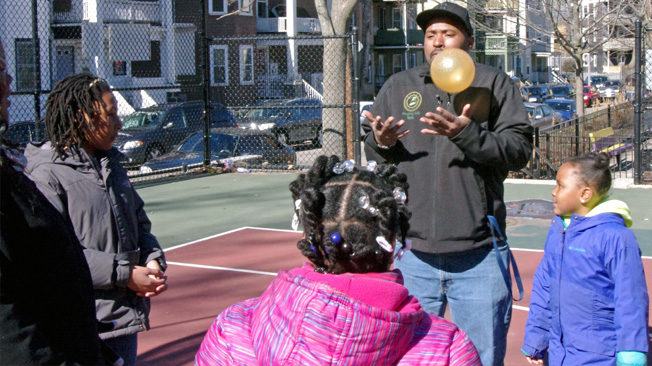
(Science Skills: Identify diverse plants and animals that live in a city or town)
Hot Beetle! In this variation of "Hot Potato," kids pass a "beetle" (a symbolic object) around the circle while naming plants and animals that live in their city or town.
- Hand the "beetle" to a kid, and shout "Run, Beetle!" to begin the game.
- The kid runs the beetle across the circle to another player while naming a local plant or animal.
- That player runs the beetle and names a different plant or animal, and so on. The goal is to keep the chain of names going.
- The player who breaks the chain gets stuck with the beetle. That happens by blanking on a name, naming a plant or animal already mentioned, or naming a non-city plant or animal.
- Start the chain over, with all plants and animals back up for grabs.
- Keep a running list of plants and animals named.
Activity 20-40 minutes
City Safari
(20-40 minutes)
(Science Skills: Predict, observe, and compare where local animals and plants can survive, and identify and communicate the survival needs that these habitats meet)
- Ask for a volunteer to read aloud the "Hot Beetle" plant and animal list. If you skipped the warm-up, brainstorm a list of plants and animals that live in your city or town. Remind kids that beetles, ants, spiders, worms, grubs, etc., are animals too!
- Introduce the term habitat, a home that provides everything an animal or plant needs to survive. Ask kids to predict: Where in the neighborhood (or program yard) would you look for these plants and animals?
- Briefly brainstorm and confirm possible habitats for specific plants and animals. Ask: Where might raccoons sleep and raise their babies? Where might squirrels find water to drink? Where is there soil for trees to sprout and grow?
- Point out that plants are easy to see in their habitats, but animals move around and hide. Ask: How can you tell an animal lives in a habitat if you don't see it? If kids aren't sure, make a footprint in the dirt and point it out as a hint. Snap a twig in half. Besides tracks (animal footprints) and broken twigs, what other clues do animals leave behind? (Poop, nests, dens, chewed leaves or pinecones or acorns, anthills, insect egg cases under leaves, spiderwebs, small holes in the ground, trash bags raided by raccoons or squirrels, etc.)
- Go on a city safari! Explore the area for signs of plant life and animal life. Ask for volunteers to take turns reading aloud the "Animal Fact" or "Plant Fact" cards, which provide clues. At each stop, ask: How could a plant or animal meet its needs in this spot? Have kids write down what they find.
- Follow these QUILLS tips for city safari success:
- QUIet Walk quietly and listen as well as look.
- Look up—for birds and squirrels in trees and on buildings. Crouch down and look at the bases of trees, bushes, and other plants. Use a hand lens, if available.
- Stop, take a deep breath. Describe the odors.
Wrap-up 5-10 minutes
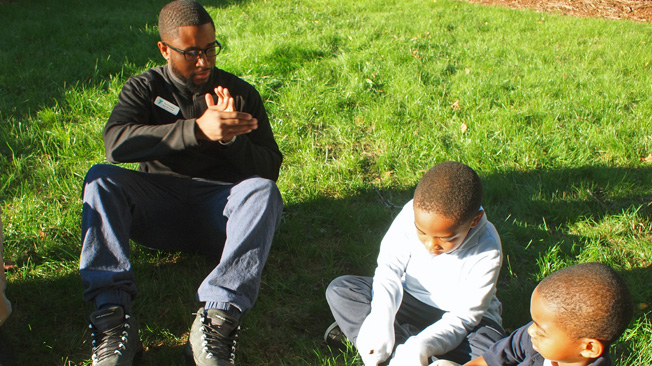
(Science Skills: Communicate the survival needs that city and town habitats meet for diverse plants and animals)
- Ask: What surprised you the most on your city safari? Imagine taking the same walk at night or six months from now. What would be different? Which signs of animals and plants did you find? Were the plants and animals on your "Hot Beetle" list or fact cards where you expected them to be? Which animals did/didn't you see? Why not? Point out that raccoons and skunks are active at night, for example. Many animals hide from people.
- Discuss: How were the animals interacting with the plants? (Birds perching on trees, insects crawling on branches, bees visiting flowers, caterpillars munching on leaves, etc.)
- If you haven't already, send home the "Explore Animals Around You" and "Explore Plants Around You" handouts to provide families with ideas on how to continue investigating animals and plants together.
Explore Some More
Tracing Roots
A tree's roots can extend as far as, or even further than, its canopy, the outer reaches of its longest branches. Find a tree growing by a sidewalk or pavement in a safe area. Using sidewalk chalk, have kids outline the space on the ground covered by the tree's canopy. Walking heel-to-toe, ask them to measure the diameter of the outline.
Water Mystery
Explore tree roots. Ask: What do roots do for a tree? (Anchor it in place; absorb nutrients and water from the soil) Explain that inside the tree, straw-like structures carry water and nutrients up to the branches and leaves. Ask: How do trees get rainwater if most of their roots are beneath the pavement? (Roots in the soil right around the tree can soak up rain.) Learn more about city trees in the Brooklyn Botanic Garden's online resource: Street Tree Bed Care: Give Trees a Chance.
Explorer's Notebook
Use the template provided: Give kids a few minutes to explore some more, and draw and write about signs of plant and animal life. Guiding questions:
- What plants and animals do you hope to see on a future safari? Where's the toughest place you saw a plant growing? What kinds of food do plants provide animals?

